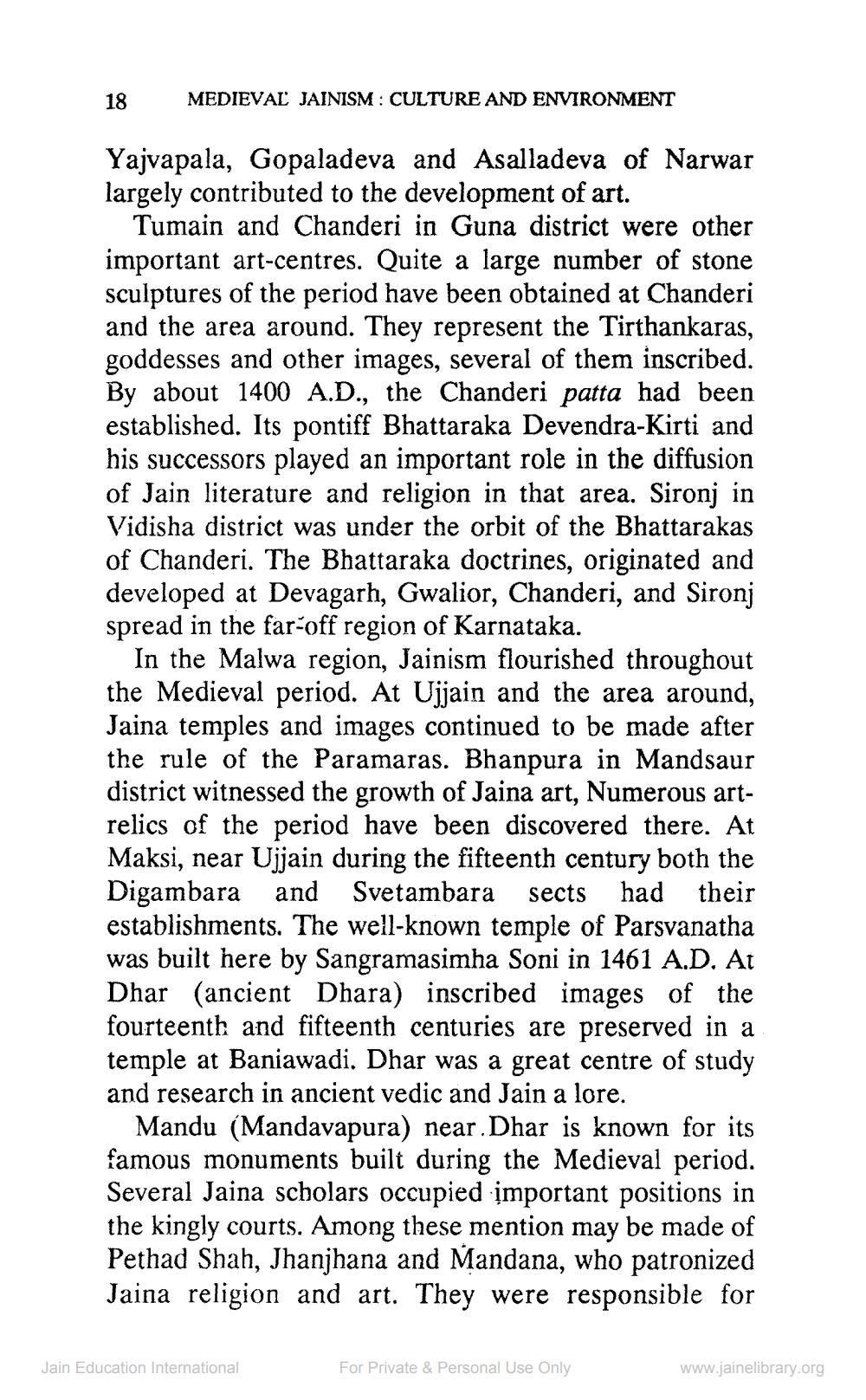________________
18
MEDIEVAĽ JAINISM : CULTURE AND ENVIRONMENT
Yajvapala, Gopaladeva and Asalladeva of Narwar largely contributed to the development of art.
Tumain and Chanderi in Guna district were other important art-centres. Quite a large number of stone sculptures of the period have been obtained at Chanderi and the area around. They represent the Tirthankaras, goddesses and other images, several of them inscribed. By about 1400 A.D., the Chanderi patta had been established. Its pontiff Bhattaraka Devendra-Kirti and his successors played an important role in the diffusion of Jain literature and religion in that area. Sironj in Vidisha district was under the orbit of the Bhattarakas of Chanderi. The Bhattaraka doctrines, originated and developed at Devagarh, Gwalior, Chanderi, and Sironj spread in the far-off region of Karnataka.
In the Malwa region, Jainism flourished throughout the Medieval period. At Ujjain and the area around, Jaina temples and images continued to be made after the rule of the Paramaras. Bhanpura in Mandsaur district witnessed the growth of Jaina art, Numerous artrelics of the period have been discovered there. At Maksi, near Ujjain during the fifteenth century both the Digambara and Svetambara sects had their establishments. The well-known temple of Parsvanatha was built here by Sangramasimha Soni in 1461 A.D. At Dhar (ancient Dhara) inscribed images of the fourteenth and fifteenth centuries are preserved in a temple at Baniawadi. Dhar was a great centre of study and research in ancient vedic and Jain a lore.
Mandu (Mandavapura) near. Dhar is known for its famous monuments built during the Medieval period. Several Jaina scholars occupied important positions in the kingly courts. Among these mention may be made of Pethad Shah, Jhanjhana and Mandana, who patronized Jaina religion and art. They were responsible for
Jain Education International
For Private & Personal Use Only
www.jainelibrary.org




